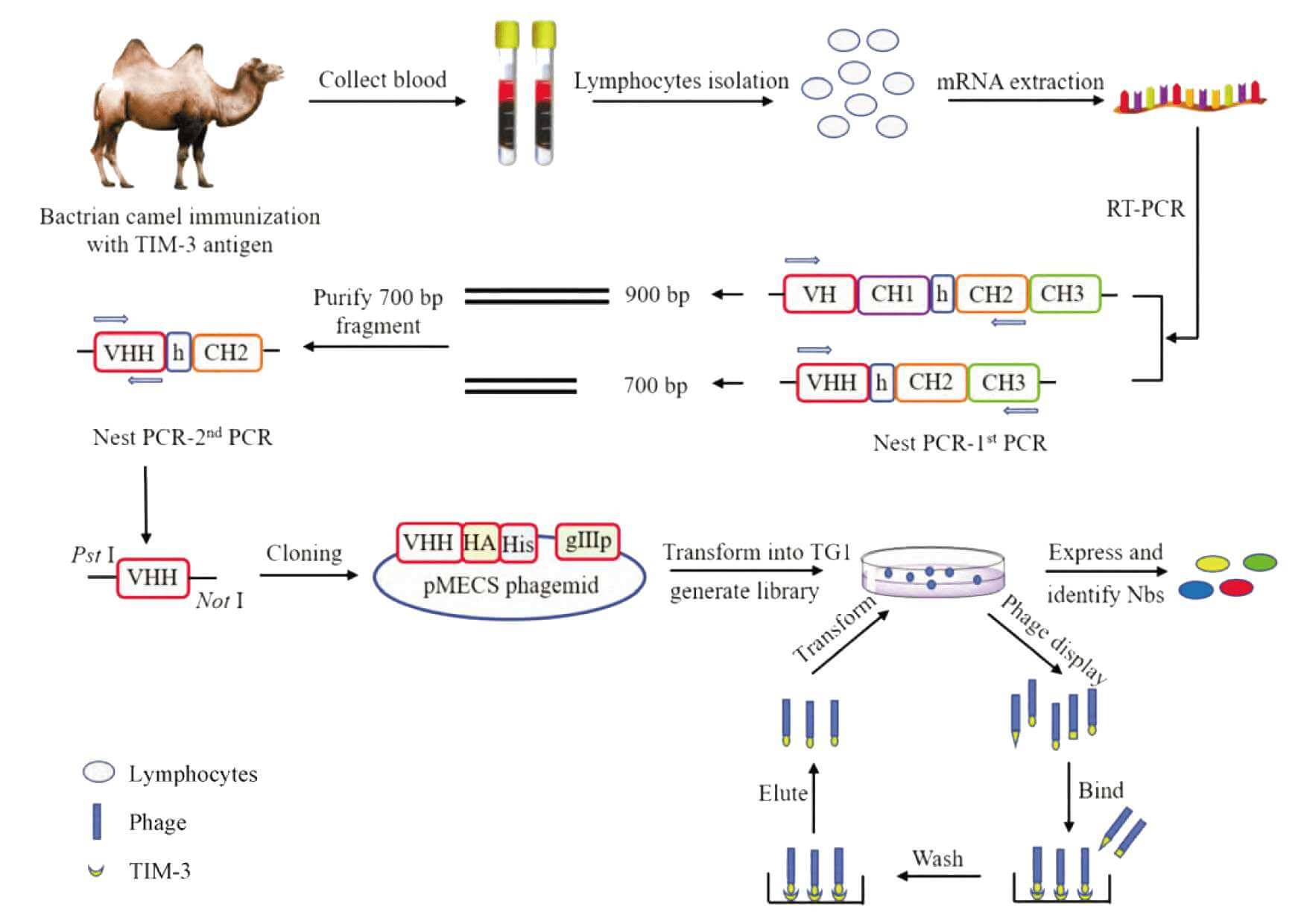Nanobody Preparation

Medicilon provides camelid VHH antibody library construction services, including antigen preparation, immunization, construction of antibody library bacteria, nanobody selection, ELISA verification and other related experiments.
 Nanobody Service Introduction
Nanobody Service Introduction-
Nanobodies are superior to traditional antibodies in many ways. Based on the unique structure of VHH single-domain antibodies derived from camelid heavy chain antibodies, nanobodies combine the advantages of traditional antibodies and small molecule drugs. They almost perfectly overcome the shortcomings of long development cycles, low stability, and strict storage conditions of traditional antibodies. Nanobodies are gradually emerging as a new force in the development of therapeutic biopharmaceuticals and clinical diagnostic reagents.Compared to conventional antibodies, nanobodies have the following advantages:Small molecular weight, capable of penetrating the blood-brain barrier;High expression in prokaryotic or eukaryotic systems; strong specificity and high affinity;Strong specificity and high affinity;Weak immunogenicity in humans, etc.
 M13 Phage Display Technology
M13 Phage Display Technology-
Phage display technology is a method of expressing exogenous peptides or proteins by inserting their encoding genes into the appropriate location of the phage coat protein structural gene using genetic engineering techniques. The exogenous peptides or proteins can form fusion proteins on the coat protein of the phage during correct expression in the reading frame, and are presented on the surface of the phage along with progeny phages upon the reassembly of the phage.Then, using the target molecule, an appropriate panning method is used to wash away the non-specifically bound phage. The bound phages are then eluted with acid-base or competing molecules, and the neutralized phages are amplified by infecting Escherichia coli. After multiple rounds of enrichment, the proportion of phages that can specifically recognize the target molecule is gradually increased, eventually yielding peptides or proteins that recognize the target molecule.
 Construction of Phage Library and Selection of Nanobodies
Construction of Phage Library and Selection of Nanobodies-
Medicilon provides unimmunized, full-age (24-36 months old) camels for antigen immunization. According to the standard immunization methods, each item is immunized with 4-6 injections. During the immunization period, ELISA titer determination services are provided to ensure that the anti-serum meets the qualified ELISA titer before blood collection and PBMC separation.Medicilon uses the pIII protein of M13 phage for surface display of VHH antibodies (nanobodies). Our scientists constructed a phagemid vector with double tags of HA and 6*His tag, and prepared a competent TG1 host strain with a transfection efficiency of 108. After 2-3 times of transfection and amplification, it can be used for high-quality VHH antibody display libraries with an effective library capacity greater than 108. After several rounds of nanobody library panning, at least 20 phage strains with high affinity can be obtained.
 Comparison of Camel and Alpaca VHH Antibody Libraries
Comparison of Camel and Alpaca VHH Antibody Libraries-
Comparison Item Camel VHH Antibody Library Alpaca VHH Antibody Library Antigen tolerance High, multiple antigens can be mixed with high-dose immunization Higher, multiple antigens can be mixed with medium immunization dose HCAb serum globulin ratio 60%~80% 20%~30% Neutralizing antibody titer High High Blood collection volume 200ml blood can be collected at one time 80-100ml blood can be collected at one time Effective storage capacity High, immune library 108-109 High, immune library 107-108 Animal cost Lower High Antigen requirement 4-6mg, purity>85% 4-5mg, purity>85%
 Schematic diagram of nanobody preparation service process
Schematic diagram of nanobody preparation service process-

Image source: MA Lin-lin, et al. Construction and screening of phage display library for TIM-3 nanobody. Acta Pharmaceutica Sinica2018, 53 (3): 388-395.
 Camelidae nanobody library preparation project process
Camelidae nanobody library preparation project process-
Step Content Cycle Delivery Step 1: Antigen preparation The customer provides the antigen or Medicilon prepares the antigen 3-4 weeks If the customer provides the antigen, the quality standard: 1. >5mg; 2. SDS-PAGE >95% Step 2: Animal immunization Immune unvaccinated camels
5 ml unimmunized serum
ELISA test serum titer10-12 weeks If the animal dies due to antigen toxicity, a certain fee will be charged
According to the ELISA results, client decides how to build the libraryStep 3: Antibody cDNA preparation Peripheral blood isolation of PBMC
Extract total RNA and reverse transcribe into cDNA3-4 weeks Provide PBMC stored in Trizol
Provide cDNA prepared by high-fidelity RT-PCRStep 4: Phage library construction Construction of phagemids
Phage library constructionVHH fragment insertion rate ≥75%
Effective library capacity≥108CFU/mLStep 5: Phage library panning Phage display nanobody, panning, at least two rounds of panning
ELISA verification, identification, screening and sequencing of positive clones (200 clones were sequenced)
Sequencing of positive clones and analysis of sequencing results4-6 weeks At least 20 sequences are guaranteed
